# The standard web dashboard
The standard web dashboard is the heart of Netdata's performance troubleshooting
toolkit. You've probably seen it before:
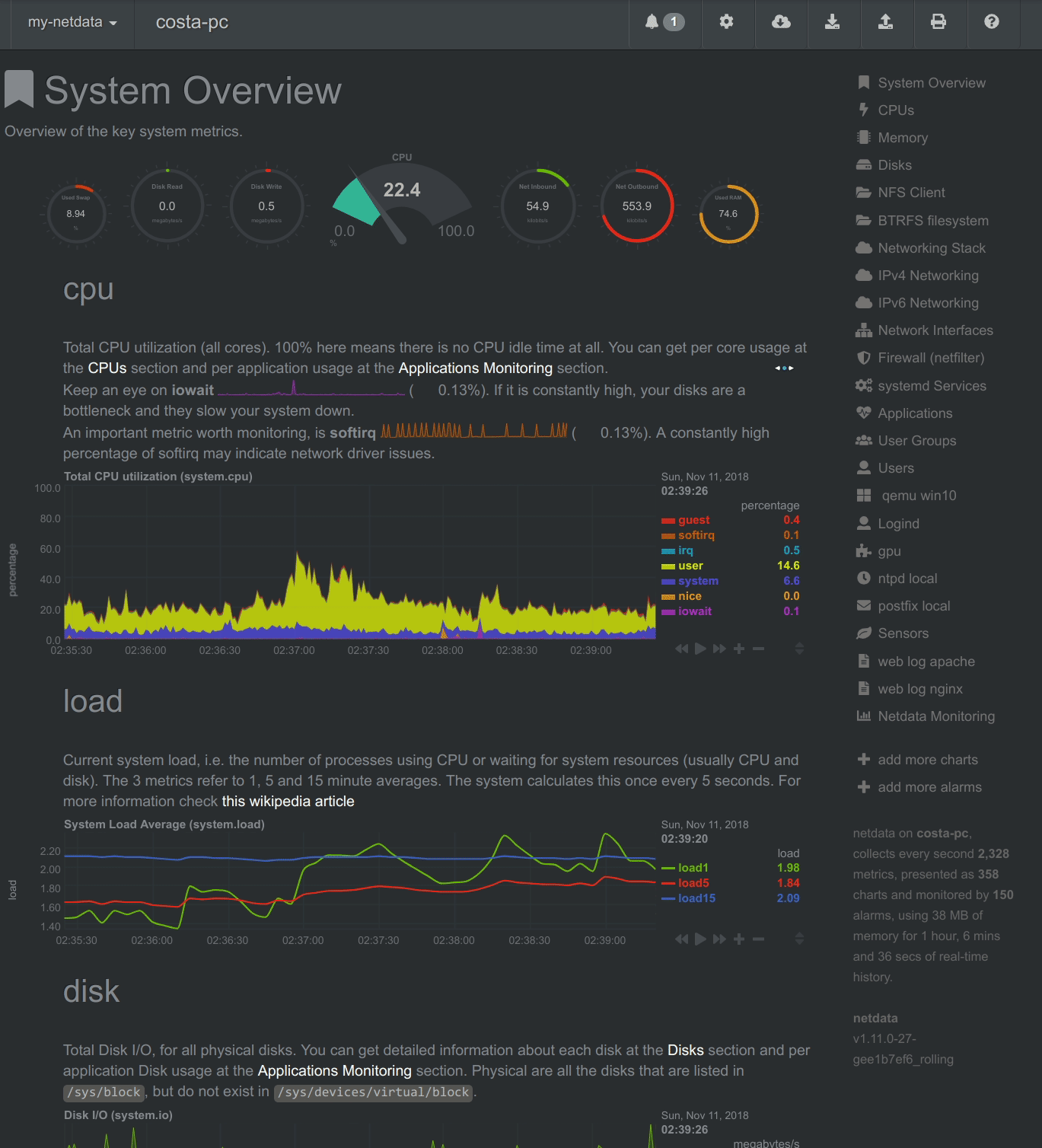
Learn more about how dashboards work and how they're populated using the
`dashboards.js` file in our [web dashboards overview](../README.md).
By default, Netdata starts a web server for its dashboard at port `19999`. Open
up your web browser of choice and navigate to `http://SERVER-IP:19999`, or
`http://localhost:19999` on `localhost`.
Netdata uses an [internal, static-threaded web server](../server/) to host the
HTML, CSS, and JavaScript files that make up the standard dashboard. You don't
have to configure anything to access it, although you can adjust [your
settings](../server/#other-netdataconf-web-section-options) in the
`netdata.conf` file, or run Netdata behind an Nginx proxy, and so on.
## Navigating the standard dashboard
Beyond charts, the standard dashboard can be broken down into three key areas:
1. [**Sections**](#sections)
2. [**Menus/submenus**](#menus)
3. [**Nodes menu**](#nodes-menu)
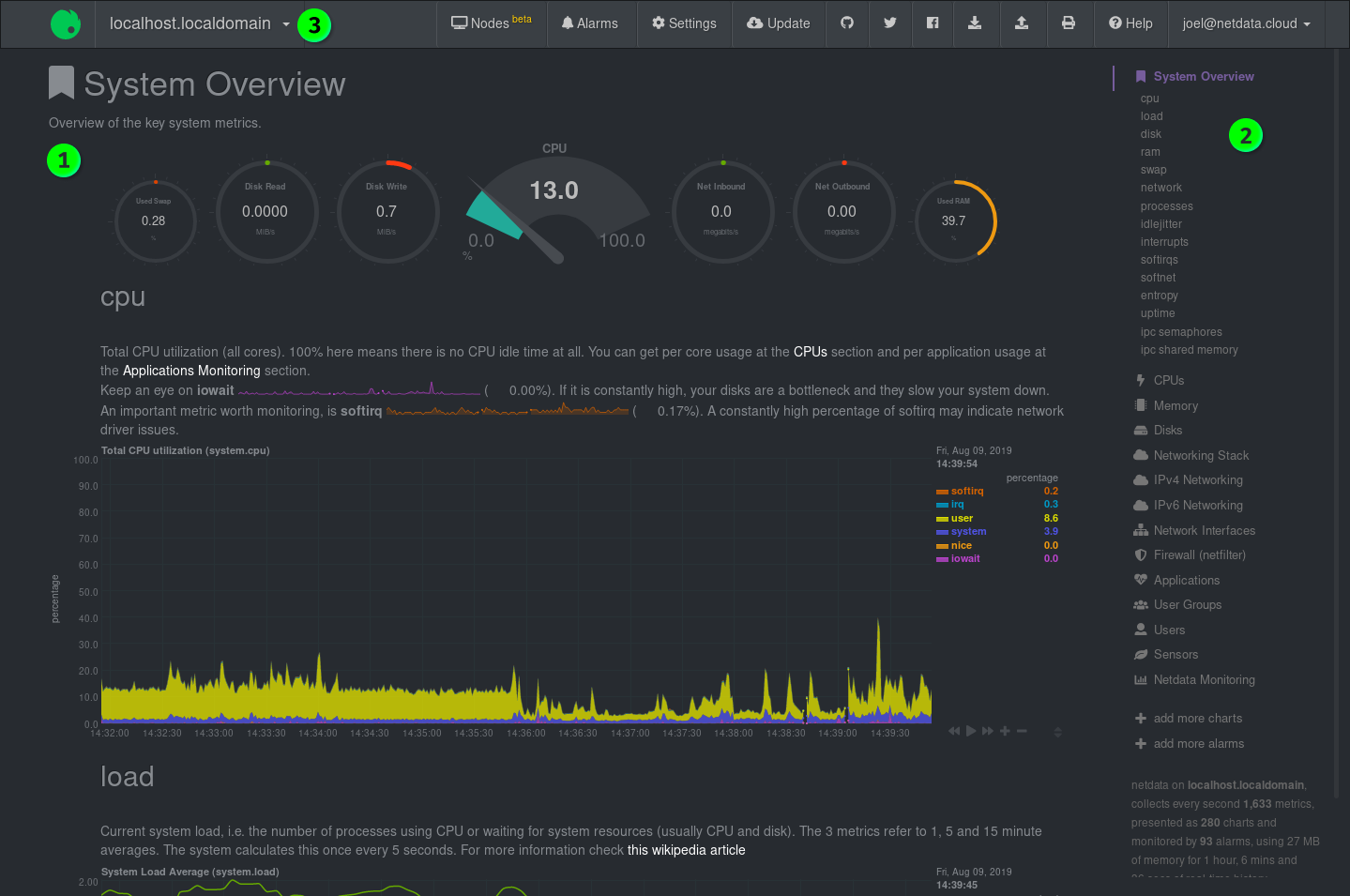
### Sections
Netdata is broken up into multiple **sections**, such as **System Overview**,
**CPU**, **Disk**, and more. Inside each section you'll find a number of charts,
broken down into [contexts](../README.md#contexts) and
[families](../README.md#families).
An example of the **Memory** section on a Linux desktop system.
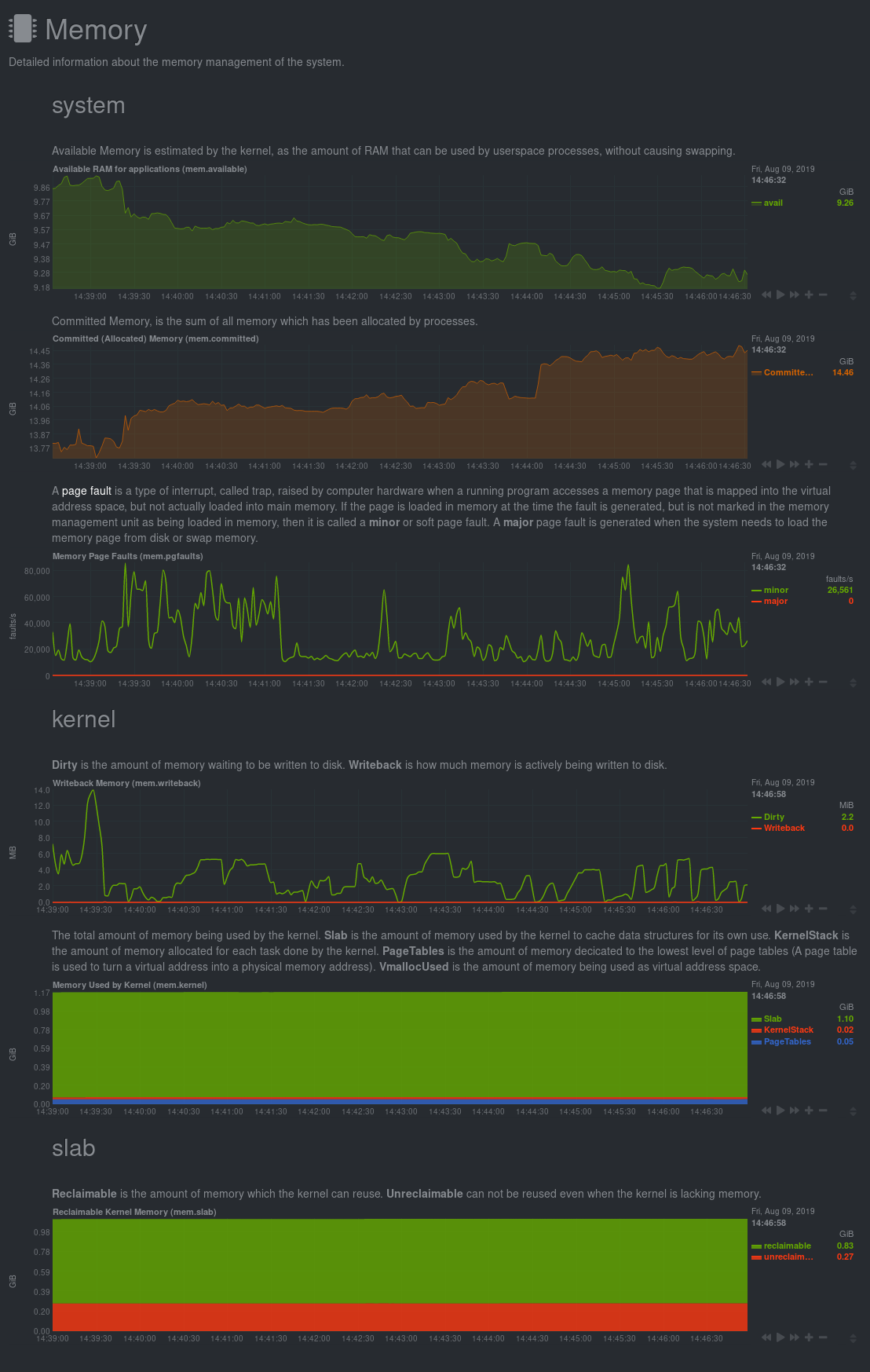
All sections and their associated charts appear on a single "page," so all you
need to do to view different sections is scroll up and down the page. But it's
usually quicker to use the [menus](#menus).
### Menus
**Menus** appears on the right-hand side of the standard dashboard. Netdata
generates a menu for each section, and menus link to the section they're
associated with.

Most menu items will contain several **submenu** entries, which represent any
[families](../README.md#families) from that section. Netdata automatically
generates these submenu entries.
Here's a **Disks** menu with several submenu entries for each disk drive and
partition Netdata recognizes.
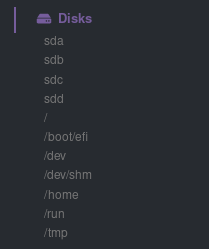
### Nodes menu
The nodes menu appears in the top-left corner of the standard dashboard and is
labeled with the hostname of the system Netdata is monitoring.
Clicking on it will display a drop-down menu of any nodes you might have
connected via the [Netdata registry](../../registry/). By default, you'll find
nothing under the **My nodes** heading, but you can try out any of the demo
Netdata nodes to see how the nodes menu works.
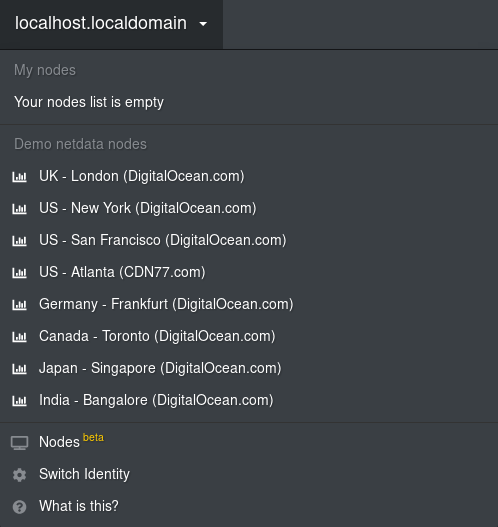
Once you add nodes via [Netdata Cloud](../../docs/netdata-cloud/) or a [private
registry](../../registry/#run-your-own-registry), you will see them appear under
the **My nodes** heading.
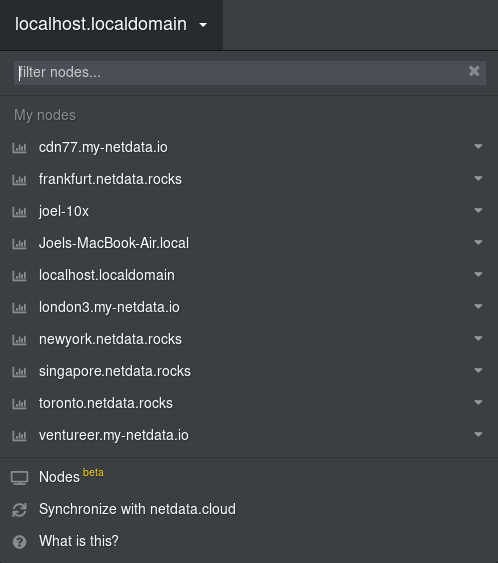
The nodes menu will also show the master netdata node and all slave nodes
streaming to that master, if you have [configured streaming](../../streaming).
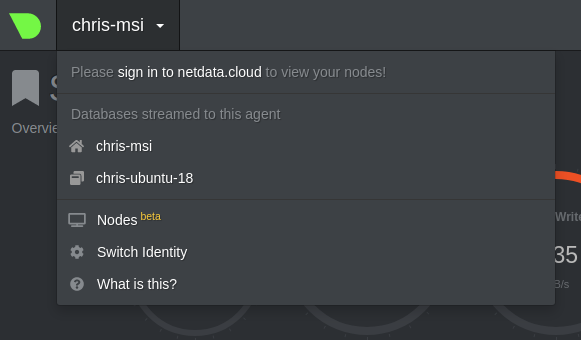
## Customizing the standard dashboard
Netdata stores information about individual charts in the `dashboard_info.js`
file. This file includes section and subsection headings, descriptions, colors,
titles, tooltips, and other information for Netdata to render on the dashboard.
For example, here is how `dashboard_info.js` defines the **System Overview**
section.
```javascript
netdataDashboard.menu = {
'system': {
title: 'System Overview',
icon: '',
info: 'Overview of the key system metrics.'
},
```
If you want to customize this information, you should avoid editing
`dashboard_info.js` directly. These changes are not persistent; Netdata will
overwrite the file when it's updated. Instead, you should create a new file with
your customizations.
We created an example file at
[`dashboard_info_custom_example.js`](dashboard_info_custom_example.js). You can
copy this to a new file with a name of your choice in the `web/` directory. This
directory changes based on your operating system and installation method. If
you're on a Linux system, it should be at `/usr/share/netdata/web/`.
```shell
cd /usr/share/netdata/web/
sudo cp dashboard_info_custom_example.js your_dashboard_info_file.js
```
Edit the file with your customizations. For example:
```javascript
customDashboard.menu = {
'system': {
title: 'Testing, testing, 1 2 3',
icon: '',
info: 'This is overwritten info for the system overview section!'
},
};
```
Finally, tell Netdata where you placed your customization file by replacing
`your_dashboard_info_file.js` below.
```conf
[web]
custom dashboard_info.js = your_dashboard_info_file.js
```
Once you restart Netdata, refresh the dashboard to find your custom
configuration:

## Custom dashboards
For information on creating custom dashboards from scratch, see the [custom
dashboards](custom/) or [Atlassian Confluence dashboards](confluence/) guides.
[](<>)